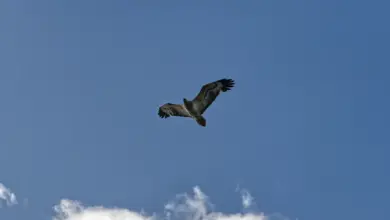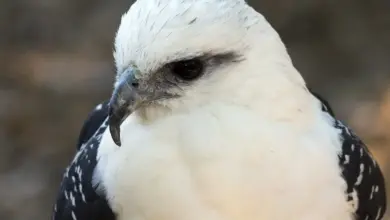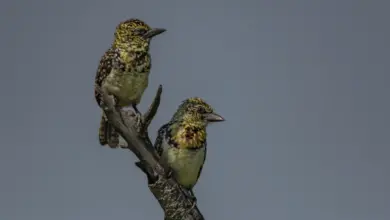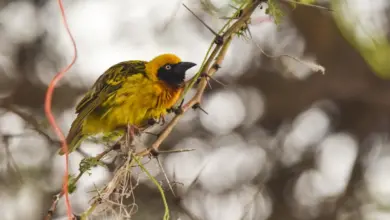Tanagers
Tanagers (Thraupidae)
Tanagers are smaller birds. Tanagers are known for their bright colors. Tanagers are brightly colored, but only the male is brilliantly colored. It has scarlet plumage with black tail, wings and beak.
Tanager Species
Scarlet Tanager
The Scarlet Tanager is the most famous member. In summer, the male adult is a brilliant scarlet with black tail and wings. The female has a more subtle coloration, with a soft yellow-green and darker wings and tail. She is
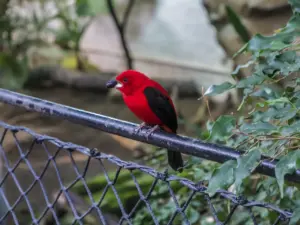
camouflaged because she builds nests, usually high up in oak trees, and incubates eggs. The male scarlet is there to feed the young.
The scarlet tanager is common in eastern states, and in the southeast of Canada. They are found in oak-dominated forests. Winters are spent in the lowland rainforests of South America’s Amazon basin.
Males undergo a costume switch before migrating south, replacing their bright red feathers with shades of yellow-green, similar to those on females. The males undergo a second molt before they head north in the late winter. They will have their brilliant colors when they reach the eastern woodlands. The scarlet robins announce their arrival with a whistled, hoarse song.
Summer Tanager
A slow, lazy, and robin-like song can be heard all over the southern United States. From California to the Carolinas. You may still hear the characteristic callnote of a pick i tuck, even if they are not singing.
The summer tanagers are found in all parts of their range. However, they prefer different habitats. In the Southeast, they can be found in oak and pinyon forests. In the Southwest, they are mainly found in cottonwoods along rivers. In the fall, they migrate to tropical wintering areas that stretch from Mexico to South America.
The male summer tanager is not as red in the spring and summer as the name might suggest.
Summer tanagers are sometimes called “beebirds” because they eat many bees and wasps. They can even catch them mid-air. Summer Tanagers catch wasps, rub them on branches and eat them. They will then eat any larvae that are left in the beehive. Try leaving out blackberries or overripe bananas to attract summer tanagers. These sweet treats will also attract bees.
Western Tanager
A tanager that has a different color pattern lives west of the Great Plains. The male Western Tanager has a yellow body with a red head and black wings. The wings of the western tanager have white or yellow bars. The females have grayer wings and a lighter yellow color. They still show the same bars.
The wintering of western tanagers is mainly in the forests of Central America. They may stop anywhere during migration, from backyards in the west to deserts. In the summer they migrate to cool pine, spruce, or fir forests, from the high mountains in the Southwest to the northwestern part of Canada.
You can attract these birds with oranges, Sugar Water, and Native Plants. These plants will draw in bugs that the tanagers will eat. Western tanagers are also known to consume suet in cold snaps.
Swallow Tanager (Tersina viridis)
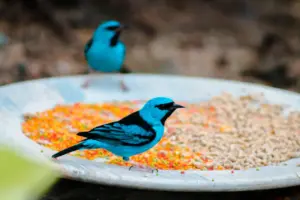
A smaller tanager is found in the lowlands and foothills of up to 1,800m.
The male has a bright cerulean color with a black face mask, whitish lower belly and black bars along the sides. Females are mossy-green with a paler yellow belly, and scalloped bars on the side.
The behavior is very different from that of other tanagers. They perch upright on exposed branches and treetops. They are usually seen in pairs or loose groups.
Paradise Tanager (Tangara chilensis)

The green color on the side of its face is followed by a violet-blue throat, which changes to a lighter shade on the belly. The rest of the feathers and the rump are black.
This coloration is not as bold as it may appear. It actually blends into the dark wood background.
The small beak of the sandpiper is black in color and taper to a point. Legs and feet are also black.
Tanagers with Hepatic and Flaming Colors
At first glance, in the mountain pine forests that stretch from southern Colorado, to Arizona, and west Texas, two tanagers, one red and one yellow, might look like summer Tanagers. The male is brick red, not rose-red, like a summer Tanager. And the female is richer yellow, with gray cheeks. These are Hepatic Tanagers. They’re members of a tropical specie that can be found from Argentina to the south.
Hepatic Tanagers do not migrate, but rather withdraw from the northern edge their range during fall. Some can be seen in Arizona in the winter. The majority of their diet is insects such as beetles, but they also enjoy berries in the late summer. The male tanager’s liver-like color gives the species its name.
A fifth type of tanager, which is rare, can be found in addition to the scarlet tanager, summer tanager, western hepatic, and hepatic. Flame-colored Tanagers were not found north of Mexico until 1985 when a male was spotted in Arizona’s Chiricahua Mountains. Since then, several have been discovered in the mountains of western Texas and southern Arizona.
Tanager Description
Tanagers have small bodies. The Short billed Honeycreeper is the smallest bird. It measures 9 cm and weighs only 9 grams. The Magpie Tanager is the longest bird at 26 cm. The White Capped Tanager is the heaviest, weighing 114 grams. The size and weight of both sexes is usually the same.
Tanagers are well-known for their bright colors. Tanagers are known for their bright colors. The males have scarlet plumage with black tail, wings and beak. Both sexes have similar sizes. The majority have short, rounded wing tips. The male Louisiana tanager is red, yellow and black. The females are yellow and olive green.
Tanager Distribution
The Scarlet Tanager (Piranga Olivacea), which is the largest species in North America, has a range of about a third of the United States. Around 60% of the tanagers are found in South America. Around 30% of this species live in Andes.
In Central America and North America, (excluding Alaska and Northern Canada), only 18 species are found year-round. Only four species migrate to North America for breeding. The Scarlet Tanager is one of them. Tanagers usually live in pairs, or small groups of 3 to 5 individuals. Tanagers only live in the New World Tropics. The Columbia Encyclopedia, Sixth edition 2006
Tanager Song
The song of the red tanager of the South is more melodious than the rosy summer Tanager.
Tanager Classification
Tanagers belong to the order Passeriformes and family Thraupidae.
Tanager Diet
Tanagers are omnivorous. Tanagers eat fruit, seeds, nectar and flower parts.
Tanager Breeding
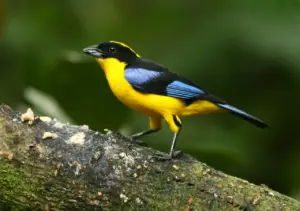
In temperate regions, the breeding season begins in March and lasts until June. In South America, it is from September to October. Breeds from the extreme south-east of Canada to the east-central U.S. It spends its winters in tropical forests of northwestern South America. Most nests are cup-shaped and built on tree branches. The entrances to the nest are often built along the side. The nests of most species are hidden in dense vegetation. The clutch size is between 3-5 eggs. The female is responsible for incubating the eggs, and also builds the nest. While the female is incubating, the male can feed her. Both the male and female can feed their young.
Cool Facts
- The Tanager Is the only bird that has completely red plumage. There aren’t many all red birds (northern cardinals, pine grosbeaks, vermillion flycatchers) in North America, but the male summer tanager is the only one that is completely red in coloring.
- You can attract scarlet tanagers with grape jelly and oranges.
- Tanagers can be found in the American Tropics. They are among the brightest-colored songbirds. Travelers to South America may see over 30 different species of tanagers, each displaying an array of colors. The thick-bill medium-sized Songbirds are common. Some birds look like the summer tanager and scarlet tanager. Researchers know that they are not related.
- Tanagers are attracted to the lure
They are picky nesting birds and won’t spend the summer in your area unless it is close to forest. In spring or fall, passing migrants may appear anywhere. fruits such as bananas, orange halves, or watermelon slices can be used to attract a Tanager bird. Water is the best source to attract them.
Try a water fountain that has a dripper to create the sound of flowing water.

